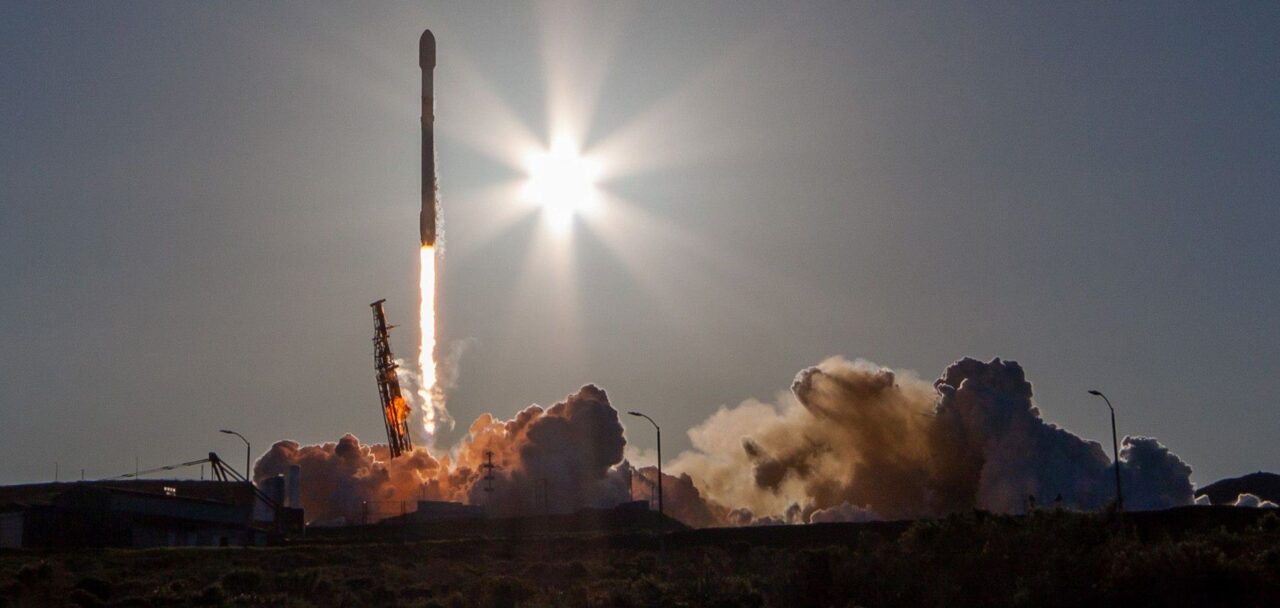SpaceX‘s Falcon 9 rocket recently achieved a significant milestone by completing its 300th mission, further cementing SpaceX’s position as a leader in the commercial spaceflight industry. The mission involved launching a batch of Starlink satellites into orbit, showcasing the rocket’s reliability and SpaceX’s ambitious vision for global internet coverage.
Key Highlights:
- The 300th launch took place at Vandenberg Space Force Base in California.
- This mission was part of a series of launches within a 24-hour period, including the USSF-124 mission and the IM-1 mission, a robotic lunar lander by Intuitive Machines.
- The Falcon 9 rocket has been instrumental in deploying SpaceX’s Starlink satellites, aimed at providing global high-speed internet.
- Following stage separation, the Falcon 9’s first stage booster successfully landed on the droneship ‘Of Course I Still Love You’ in the Pacific Ocean.
- The launch not only demonstrated SpaceX’s operational capabilities but also contributed to its growing Starlink constellation, which aims to offer high-speed internet across the globe.

Throughout its operational history, Falcon 9 has not only facilitated the deployment of a significant portion of the Starlink constellation but has also been pivotal in delivering cargo to the International Space Station, launching geostationary communication satellites, and even carrying humans to orbit. With over half of its missions dedicated to Starlink, Falcon 9 has played a crucial role in SpaceX’s vision of a connected world.
SpaceX’s recent achievements highlight its continued emphasis on innovation, reusability, and operational efficiency. The successful landing of Falcon 9 boosters, whether at sea or on land, underscores SpaceX’s commitment to reducing spaceflight costs and minimizing waste. The Starlink missions, in particular, demonstrate the company’s efforts to address global internet connectivity challenges, providing services in areas previously unreachable by traditional infrastructure.
Elon Musk’s SpaceX continues to push the boundaries of space exploration and satellite internet provision. With each successful mission, SpaceX not only advances its technological capabilities but also contributes to the broader goal of making space more accessible and improving global communication networks.
As SpaceX’s Falcon 9 rocket surpasses the 300-mission milestone, the company’s track record of success reinforces its position as a pivotal player in the new space race. The implications of this achievement extend beyond the immediate impact on satellite internet provision, hinting at a future where space is increasingly integral to our global infrastructure and connectivity.
SpaceX’s achievements with Falcon 9 and Starlink are part of a larger trend towards commercial involvement in space exploration. As companies play an increasingly significant role alongside traditional space agencies like NASA and ESA, we’re witnessing a paradigm shift in how space activities are funded, executed, and envisioned. This shift promises to accelerate technological innovation, expand human presence in space, and unlock new opportunities for scientific discovery.
Conclusion
SpaceX’s 300th Falcon 9 launch is more than a numerical milestone; it’s a testament to the company’s impact on the space industry, technological innovation, and global connectivity. As SpaceX continues to push the boundaries of what’s possible, the future of space exploration looks increasingly open, accessible, and driven by a blend of commercial ambition and scientific curiosity.

























Add Comment